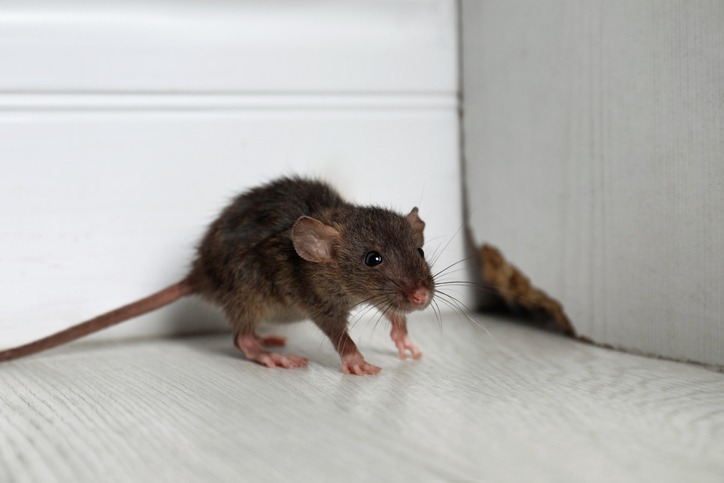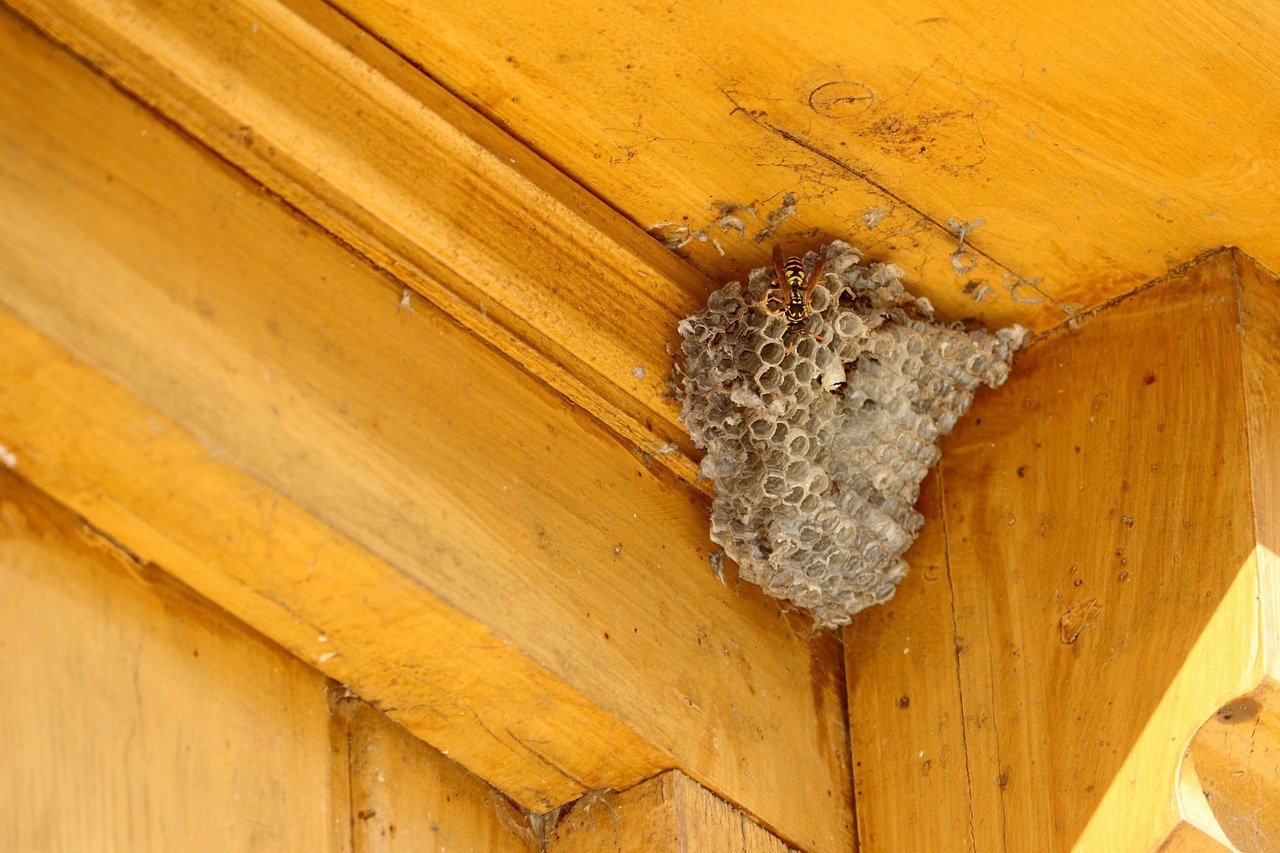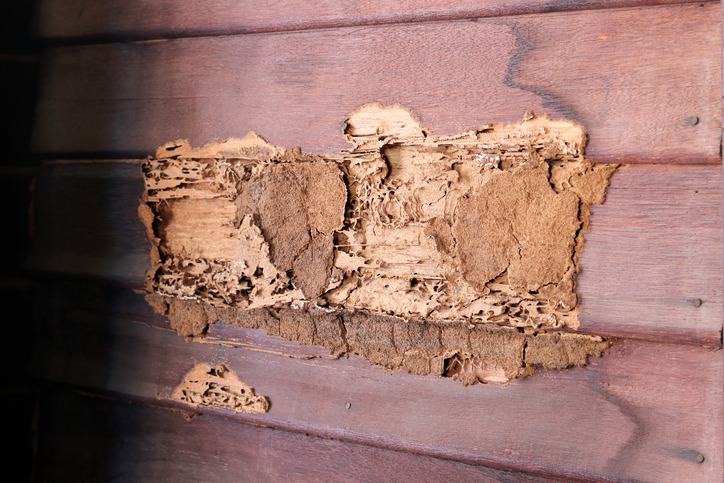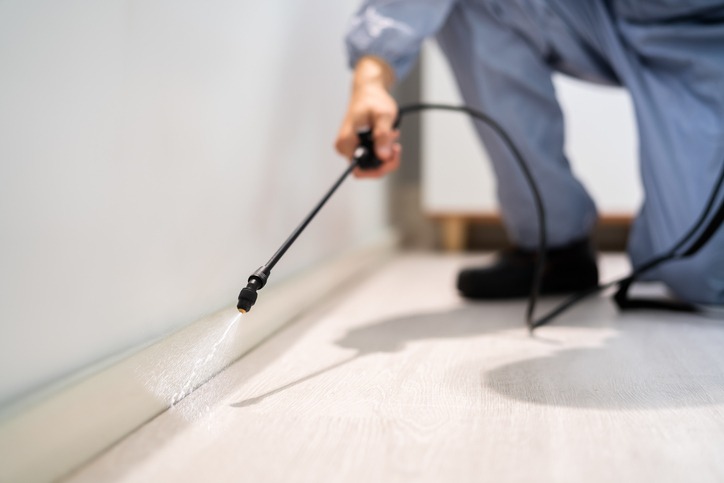Seasonal pest prevention and maintenance are critical components of property management that safeguard both the integrity of structures and the health of their occupants. As the seasons change, so do the behaviors and populations of pests, making it essential for homeowners, landlords, and business owners to stay vigilant and proactive. This article serves as a comprehensive guide, outlining effective strategies to prevent and control pest infestations throughout the year. By understanding the seasonal patterns of common pests and implementing regular maintenance routines, you can create a more secure and comfortable environment for everyone. Whether you’re looking to bolster your current pest control measures or are starting fresh, this guide will provide valuable insights and practical steps to keep your property pest-free in every season.
Understanding Pest Behavior with the Seasons
The presence of pests can range from being a mere annoyance to posing serious health hazards and causing property damage. Grasping the seasonal shifts in pest activity is vital for devising effective prevention and management tactics.
Pests adapt their behaviors to the changing temperatures and environmental conditions throughout the year. The increase in warmth during spring and summer prompts insects such as mosquitoes, flies, and ants to become more prevalent as they search for sustenance and breeding sites. Rodents, too, may take advantage of these months to stockpile provisions for the impending colder seasons. The onset of spring is particularly notable for the resurgence of pests, as the warmer and moister conditions favor the reproductive cycles of many species.
In contrast, the arrival of cooler temperatures in autumn drives pests like rodents, cockroaches, and spiders to seek the cozy confines of indoor spaces. This inward migration can persist into the winter months when the harsh outdoor environment becomes uninhabitable for these creatures. Although their activity may diminish, they can still be problematic as they hunker down in secluded areas such as walls, attics, or even common living areas.
Each season also introduces specific environmental signals that prompt changes in pest behavior. For instance, the lengthening daylight hours in springtime spur many species to commence their life cycles, whereas the diminishing light in autumn encourages others to find shelter. Recognizing these patterns is not just crucial for thwarting infestations but also for pinpointing the optimal timing for pest control treatments, as certain pests are more susceptible at different times of the year.
By anticipating these seasonal trends, property owners can fortify their defenses against these unwelcome guests year-round. This insight into seasonal pest behavior is the cornerstone of a well-rounded pest management strategy, tailored to meet the distinct challenges each season presents.
Common Pests in Each Season
Spring: With the return of warmth, pests awaken from their winter dormancy. Termites initiate their swarming season, posing a threat to the structural integrity of properties. Ant colonies stir to life, dispatching scouts in search of nourishment, which may lead them to your pantry. Mosquitoes begin their life cycle in the standing water left by spring showers, and wasps set about constructing their nests, anticipating the months to come.
Summer: The season’s warmth and moisture create an ideal breeding ground for a host of pests. Mosquitoes reach their peak, and ticks, carriers of Lyme disease, are especially active. Flies, potential vectors of disease, are omnipresent, and the rising temperatures can lead to an explosion in ant populations. Bees and wasps, too, are abuzz, which can be worrisome for individuals with allergies.
Fall: As the mercury dips, creatures such as mice and rats begin their quest for warmth, often inside human dwellings. Spiders, though less destructive, increase their indoor presence as they follow their prey. Stink bugs and lady beetles congregate on building exteriors, searching for entry points to overwinter, which can lead to infestations.
Winter: While insect activity generally declines in the cold, the threat is not entirely eliminated. Bed bugs thrive indoors, regardless of the season, and rodents continue to be a concern as they nestle into insulation and chew on electrical wires, posing a fire hazard. Cockroaches gravitate towards the warmth and humidity of heated homes, and without consistent control efforts, their numbers can swell.
Armed with knowledge of these seasonal pest patterns, one can implement timely and effective preventative measures, diminishing the likelihood of significant infestations and reducing the need for more drastic control actions in the future.
Seasonal Pest Prevention Strategies
Navigating the changing seasons requires a dynamic approach to pest control. Each season ushers in unique pest behaviors and life cycles, demanding tailored prevention methods.
In the spring, a comprehensive home inspection is paramount. Look for telltale signs of pests awakening from their winter slumber. Mitigate moisture-related allurements by repairing leaks and enhancing drainage near your home’s foundation. Fortify your home’s defenses by sealing gaps and employing fine mesh screens to block common entry points. As the greenery burgeons, keep it at bay from your home’s exterior to thwart easy access for pests.
As summer’s warmth takes hold, prioritize the elimination of stagnant water to disrupt mosquito breeding grounds. Be vigilant in emptying containers that collect rain, such as bird baths and pails. Maintain a strict regimen of food storage and waste management—seal edibles securely and address spills swiftly to deter ants and flies. Garbage receptacles should be sealed and placed at a distance from your dwelling. Keep an eye out for nests of stinging insects, intervening early to prevent their expansion.
With fall’s arrival, rodents begin their quest for winter shelter. Examine your home’s exterior meticulously for entry points, particularly where utilities penetrate the structure, and seal them securely. Firewood should be stored away from your home and off the ground to discourage nesting. Ensure that areas prone to moisture accumulation, like basements and crawl spaces, are well-ventilated and dry. Vigilance is also key when introducing items into your home—inspect groceries, seasonal decorations, and storage containers for stowaway pests.
Winter demands an indoor focus to maintain a pest-free environment. Uphold rigorous sanitation to deter pests such as cockroaches and rodents. Regular inspections behind appliances and within cabinets are crucial to eliminate potential food sources. Store foodstuffs in airtight containers and manage clutter to prevent it from becoming nesting material. Stay alert for signs of pest activity and take swift action to address them.
Adhering to these seasonal tactics will greatly diminish the likelihood of pest invasions, fostering an inhospitable environment for these unwelcome guests throughout the year.
Spring and Summer Pest Prevention
As the natural world awakens, spring and summer present pivotal moments for preemptive pest control measures. During these months, when insect and animal activity surges, homeowners are wise to implement strategies that align with pest behavior.
Commence with a meticulous examination of your home’s perimeter during spring, pinpointing and sealing off any potential ingress points. Employ caulking and weather stripping to reinforce windows and door frames. Inspect window screens for breaches that could permit insect entry, repairing or replacing them as necessary.
Create a defensive boundary around your home with a perimeter treatment. Whether you opt for a do-it-yourself approach or professional application, an effective insecticide can deter ground-based pests. Indoors, reduce potential nesting sites by decluttering and using sealed containers for storage, particularly for items like seasonal garments and bedding.
Transitioning into summer, focus on moisture control, as it is a magnet for pests. Deploy dehumidifiers in humid areas of your abode to create an inhospitable environment for moisture-loving pests. Keep your outdoor areas pristine—mow the lawn regularly, eradicate weeds, and dispose of yard waste that could harbor or attract pests.
Address any stagnant water promptly to prevent mosquitoes from establishing breeding sites. This includes plant saucers, bird baths, and clogged gutters. Inspect your irrigation system to ensure it doesn’t contribute to moisture accumulation around your home’s foundation.
When enjoying al fresco dining, practice prompt food clean-up and secure trash receptacles to avoid enticing insects and wildlife. Additionally, consider planting pest-repelling flora such as citronella, lavender, and marigolds, which can serve as both a decorative and functional addition to your garden.
By integrating these measures with the overarching seasonal strategies, you’ll be well-equipped to safeguard your home against pest incursions during the bustling spring and summer months.
Fall and Winter Pest Preparation
When the chill of autumn sets in, unwelcome guests may attempt to invade your cozy abode. Creatures such as rodents, spiders, and certain insects seek refuge from the cold, often finding solace within the nooks and crannies of your home. To combat these intrusions, fall and winter preparations should center on reinforcing your home’s defenses and removing any inviting conditions for these pests.
Begin your defensive strategy by thoroughly examining your home’s exterior, building upon the groundwork laid in the warmer months. Keep a vigilant eye for any new or expanding openings. Seal these vulnerabilities with silicone-based caulk to deny entry. Check that door sweeps and window seals are in good repair to prevent drafts and pest ingress.
Venture into the less frequented spaces of your home, such as attics, basements, and crawl spaces, which become prime real estate for pests seeking shelter from the cold. Utilize exclusion methods, like sealing gaps around utility line entry points, to create a barrier against these critters. Enhance ventilation and incorporate moisture barriers to mitigate dampness—a magnet for many pests.
Storage habits can also play a pivotal role in pest prevention. For instance, when storing firewood, which can be a transport vehicle for pests, place it a safe distance from your home—about 20 feet—and inspect each piece before bringing it indoors. Similarly, opt for sturdy, sealed containers for stowing away holiday decorations and seasonal attire to deter nesting.
With the drop in temperature, rodents tend to become more audacious in seeking indoor shelter. To discourage these unwelcome houseguests, store edibles in sealed containers and regularly dispose of waste in secure bins. If you detect signs of rodent presence, consider traps or consult with a pest control professional.
Tidy up clutter-prone areas like basements and garages. Keep items elevated and organized to eliminate potential pest harborage sites.
As the seasons transition, it’s also prudent to enlist the expertise of a pest control service. Their specialized knowledge can fortify your home against the unique pest challenges that arise during the colder months.
By proactively adopting these measures, you can maintain the warmth and comfort of your home for your family, not for the pests that seek to escape the frosty weather.
Year-Round Pest Control Maintenance
Maintaining a pest-free environment is an ongoing commitment. By integrating pest control into your regular home maintenance routine, you can significantly diminish the likelihood of infestations.
A clean home is a fundamental deterrent for pests. Incorporate practices such as wiping down surfaces to eliminate food remnants, vacuuming to remove crumbs, and disposing of garbage in lidded bins on a consistent schedule.
Pay extra attention to the kitchen and dining areas. Ensure that these spaces are kept immaculate, with no food particles left behind. Store pantry items in sealed containers and routinely purge expired goods.
Outside, a well-kept landscape is crucial. Regularly mow the lawn, trim bushes, and prune branches that could grant pests access to your home. Clear out any accumulated debris where pests might nest or conceal themselves. Using gravel or rocks near your home’s foundation can act as a deterrent to nesting.
Effective water management is also essential. Ensure that your home’s foundation has proper drainage to prevent creating attractive conditions for moisture-seeking pests. Regularly inspect and adjust irrigation systems to avoid water accumulation.
Regular inspections for signs of pest activity are vital. Be on the lookout for droppings, nests, or damage that could indicate an infestation. Catching these signs early can help prevent a small problem from escalating.
If you have pets, keep their feeding areas clean and avoid leaving food out overnight, as it can attract various pests.
By embracing these year-round maintenance practices, you create a strong defense against pests, making your home a less appealing target for those in search of refuge and food.
Regular Cleaning and Sanitation
A rigorous regimen of cleanliness is the bedrock of thwarting pest infestations. By adhering to a consistent cleaning routine, you minimize the food and water sources that entice pests. This practice is a critical component of the comprehensive pest management strategies discussed earlier.
Target zones prone to food particle accumulation, such as kitchens and dining areas. Implementing daily sweeping, mopping, and vacuuming routines can significantly diminish the likelihood of pests being drawn to your living spaces. Immediate attention to food spills is equally crucial in maintaining a pest-resistant environment.
Drains often serve as a beacon for pests, offering both sustenance and a hospitable breeding environment. Regularly flush them with a simple concoction of vinegar and baking soda or a commercial drain cleaner to maintain a clear and uninviting passage for unwanted guests.
Trash management is another pivotal aspect. Dispose of waste with regularity, and cleanse bins to eradicate tempting residues. For those using outdoor bins, ensure they are equipped with secure lids and positioned away from your home’s entrances.
Inspect your pantry for telltale signs of uninvited insects, such as moths or beetles. Store susceptible foodstuffs—grains, cereals, and flours—in sealed containers to thwart pest access.
Fabrics and textiles, particularly in secluded storage areas, can attract pests like silverfish or moths. Regular laundering of stored clothing and bedding, along with frequent vacuuming of carpets and furniture, can help keep these pests at bay.
By maintaining these sanitation standards, you create an inhospitable environment for pests, significantly reducing their chances of survival and proliferation within your home.
Landscape Maintenance
Properly tended outdoor spaces do more than enhance curb appeal—they serve as a formidable line of defense against pests. Integrating specific landscaping measures into your pest control regimen can significantly bolster your home’s defenses.
Keep your lawn trim, as overgrown grass is a haven for pests such as ticks and rodents. Regularly prune your garden and remove any plant overgrowth that could harbor pests.
Yard waste, including grass clippings and fallen leaves, should be cleared away without delay. Such organic matter, if left to decompose, can become a magnet for pests. Compost bins, while beneficial, should be managed with care and situated away from your home.
Be mindful of mulch placement; it should be laid at least 18 inches from your home’s foundation to deter termites and other pests. Opt for less enticing mulch alternatives, like stone or rubber, especially near the perimeter of your house.
Trees and shrubs should be pruned to prevent their branches from making contact with your home, as these can provide easy access for pests. Additionally, address any irrigation system leaks promptly to avoid creating moist environments that attract pests.
Incorporate plants that naturally repel pests, such as lavender and marigold, into your garden. These not only dissuade pests but also add aesthetic value to your property.
Through diligent landscape maintenance, you not only cultivate a pleasant outdoor sanctuary but also play an active role in deterring pests year-round.
When to Seek Professional Pest Control
Despite diligent efforts to thwart pests through various preventive measures and routine home upkeep, there are instances where the expertise of professional pest control services becomes indispensable.
Recognizing When DIY Isn’t Enough
The transition from self-managed pest solutions to professional intervention is often marked by certain telltale signs, including:
- Unyielding Infestations: If pests persist after multiple treatment attempts with store-bought products, this stubbornness suggests the need for a more robust solution that only professionals can provide.
- Structural Integrity Concerns: Discovering hollow-sounding wood upon inspection can be a red flag for termite activity, necessitating immediate expert attention to prevent further architectural damage.
- Hidden Nests: The presence of nesting materials or droppings in secluded areas often points to a more extensive issue that may not be resolved with surface-level treatments.
- Challenging Pests: Encounters with pests such as bed bugs or fleas, notorious for their resilience against common treatments, typically require the advanced methods that professionals bring to the table.
Immediate professional assistance is also crucial for households with members sensitive to stings or bites, as certain pests pose direct health threats.
Advantages of Professional Pest Management Plans
Opting for a professional pest management plan elevates the level of protection against infestations. Benefits of enlisting experts include:
- Advanced Treatment Options: Professionals have access to potent treatments not sold in retail outlets, offering a stronger defense against pests.
- Customized Strategies: Specialists can devise a pest control approach tailored to the unique aspects of your infestation, ensuring thorough eradication.
- Preventative Measures: Routine professional services work proactively to deter pests, addressing potential issues before they escalate.
Engaging a professional pest control company also grants insights into the most eco-friendly and safe practices, safeguarding your home and its inhabitants with conscientious care. In the long term, partnering with pest control experts can be a wise investment, saving not just time and money, but also providing peace of mind in maintaining a pest-free living space.
Advantages of Professional Pest Management Plans
Enlisting the aid of a professional pest management service can be a game-changer in your battle against unwanted critters. Let’s delve into the myriad of benefits that come with professional pest control plans:
- Targeted Treatments: With a wealth of knowledge at their disposal, professionals can pinpoint the exact species invading your space and deploy the most effective tactics to combat them.
- Advanced Tools and Techniques: Armed with commercial-grade pesticides and cutting-edge equipment, pest control specialists can deliver results that outpace anything you might find on a store shelf.
- Preventative Measures: Beyond addressing the pests at hand, experts implement strategies designed to ward off future invasions, ensuring your home remains a no-pest zone.
- Customized Plans: After thoroughly assessing your property, pest control technicians craft a battle plan uniquely suited to your home’s layout and the specific pests at hand.
- Ongoing Support: Opting for professional services often includes continuous monitoring and interventions to maintain a pest-free environment, complete with routine inspections and treatments.
- Safety: The well-being of your household and pets is paramount. Professionals are adept at applying treatments in a manner that safeguards your loved ones while also being mindful of the planet.
- Time and Cost Efficiency: Investing in professional services may have an initial cost, but the enduring effectiveness of their methods can lead to savings by reducing the need for frequent, less effective home remedies.
- Peace of Mind: Above all, the confidence that a professional pest control plan instills is invaluable, offering you the comfort of knowing your home is fortified against the nuisances and hazards posed by pests.
Useful FAQs for Seasonal Pest Prevention and Maintenance
1. What are the reasons for conducting seasonal pest prevention and maintenance?
Seasonal pest prevention and maintenance aims to protect residential and commercial spaces from the infestation of harmful pests. These may carry diseases or cause significant property damage. Routine pest prevention measures minimize these risks.
2. How does the changing of seasons impact pest activity?
Different weather conditions during the various seasons can stimulate increases or decreases in pest populations. For example, warmer conditions encourage the activity of many insects, whereas cooler temperatures often send rodents seeking indoor shelter.
3. Which pests are most common during each season?
During winter, rodents such as mice and rats often seek shelter indoors. In spring, many insects such as termites, ants, and bees become more active. Summer generally sees an increase in mosquitos, flies, and wasps, while fall often brings in stinging insects, ladybugs, and boxelder bugs.
4. What preventive measures can individuals take against pest infestation?
Sealing cracks and gaps in exterior walls, maintaining a tidy indoor and outdoor environment, using pest repellant products, and scheduling regular professional pest inspections perform vital roles in pest prevention.
5. What are the signs of a potential pest infestation to watch out for?
Common signs of pest infestation include the presence of droppings, damaged property, highly unusual noises, especially during quiet times, and an unusual smell in locations such as in the kitchen or pantry.
6. How can professional pest maintenance services help in this regard?
Professional pest maintenance services have substantial knowledge about various types of pests, their habits, and how to eliminate them effectively. They offer routine checks, preventative applications, and treatments to control any existing infestations.




